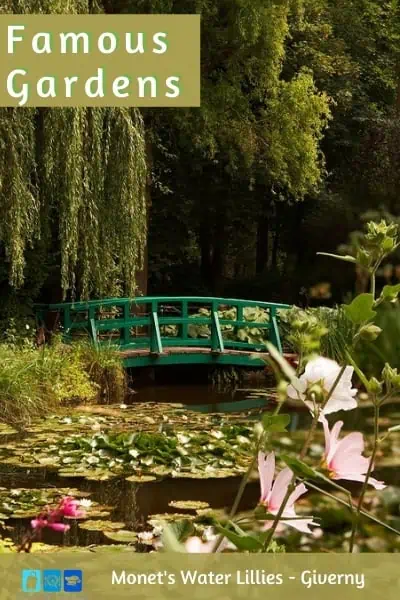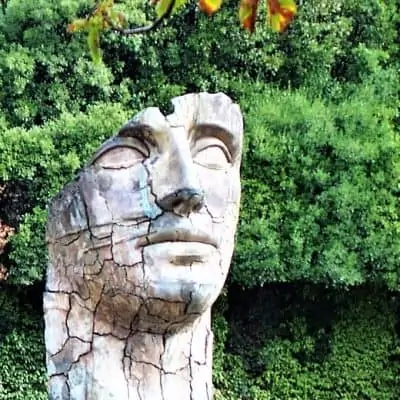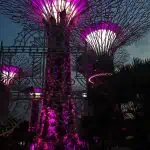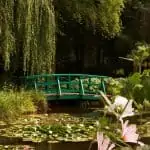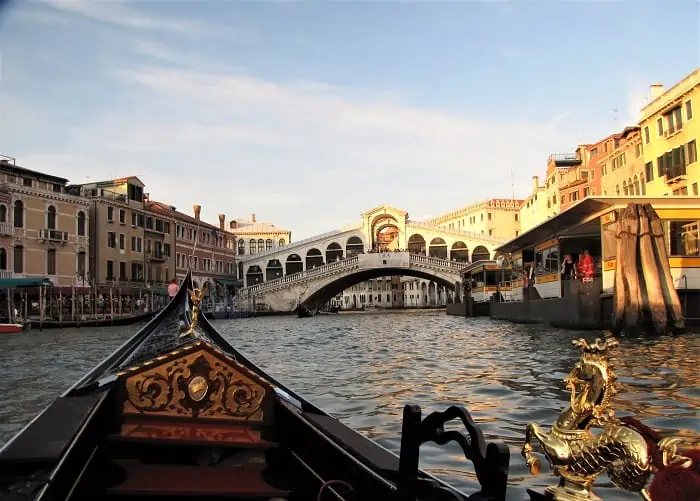9 Beautiful World-Famous Gardens
Do you love walking through massive formal gardens on huge estates, pretending you are one of the privileged ones who live there? Fortunately for most of us, many of these large estates are now open to the public. For a usually small admission price (necessary to cover the cost of maintaining these gems), anyone can stroll through the mazes, rose gardens, and gaze into koi ponds just like the hoity-toity.
As spring slowly warms up the earth and its inhabitants, we all start spending more time outdoors. Many of us begin to work in our own gardens, large and small, recreating bits of the gardens we’ve read about in books or seen on our travels. Here are some of my favorite world-famous gardens to provide some inspiration for your efforts.
1. Butchart Gardens – Victoria Canada

With 55 acres, 26 greenhouses, and around 900 bedding plant varieties, Butchart Gardens more than keeps its 50 full-time gardeners busy!
Jennie Butchart envisioned a beautiful garden haven full of colorful blossoms and lush green foliage built on the former quarry that was her backyard. In 1912 she began the 20 + year transformation of the land into what is now one of Canada’s most beautiful National Historic Sites, the world-famous Butchart Gardens.
Laid out with five unique garden areas: The Sunken Garden, Rose Garden, Japanese Garden, Italian Garden, and Mediterranean Garden, Butchart offers garden fanciers an array of plants rarely seen in one place.
If you want a bite to eat, you can have high tea in the Dining Room of the original Butchart family residence. Looking for more casual fare? The Blue Poppy offers fresh seasonal dining in a conservatory-style space.
And Butchart doesn’t stop there. You can take a ride on one of the 30 hand-carved wooden animals and chariots in the Rose Carousel. If you arrive by boat from the Tod Inlet, you can tie up your dinghy at the Wharf. View original Coast Salish style Totem Poles. And lastly, visit the Seeds and Gifts store to take home a tiny piece of Butchart for your own enchanting garden.
We’ve been to Victoria, Canada many times, but have never made it out to Butchart Gardens. This dazzling display of horticulture gives us an excellent reason for yet another trip.
2. Filoli, World-Famous Gardens In the SF Bay Area

While now a debunked quote, it’s often said that Mark Twain once opined that the Coldest Winter he ever spent was summer in San Francisco. That’s because the Bay and the state’s strange geography often leave San Francisco in a cool, dense fog in the summer months. This is why the well-to-do in the City had their summer estates down the peninsula in warmer surroundings.
Located about 30 miles south of San Francisco, surrounded by more than 23,000 acres of protected watershed open space, William Bowers Bourn II, the wealthy son of the founder of the Empire Gold Mine, and his young wife, Agnes Moody, built their country estate, Filoli, here in 1917.
Mr. Bourn used his personal credo to create a name for the Estate:
- Fight for a just cause
- Love your Fellow Man
- Live a good life
- FILOLI
When you visit Filoli, take a few minutes to sit and watch the documentary showing the property’s history. This will increase your appreciation of the experience. As you stroll through the beautiful home amazing gardens, you can almost feel part of the soirees thrown here.
Walking through these world-famous gardens that cover 16 acres, you pass by 250 fruit trees and 210 Irish Yews, imported from Muckross, imported from Killarney, County Kerry, Ireland. You are privy to the blooming of over 75,000 bulbs that are planted each year on the grounds in spring.
My husband and I have lived in the SF Bay Area for literally decades. Hubby was born at Children’s Hospital in San Francisco. Despite this, neither of us had visited Filoli (not even on a school field trip) until a couple of summers ago.
Please don’t make the same mistake. If you are visiting the San Francisco Bay Area, make a stop here. And if you live in the Bay Area, go already!
3. Desert Botanical Garden – Phoenix, AZ
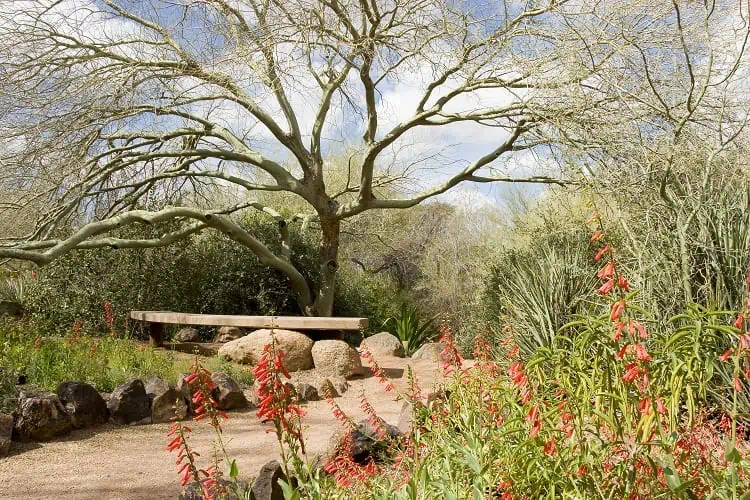
Many people look at a desert and see no signs of life, just barren, dry sand and rocks. But they aren’t really looking close enough. The Desert Botanical Garden in Phoenix is on a mission to show you what you are missing.
The Desert Discovery Loop Trail is at the heart of the Desert Botanical Garden. You pass through this loop as you venture through the Garden, viewing the different “trails,” each cultivated to display specific purposes.
The Desert Loop Trail walks you through the plants and people of the Sonoran Desert. Here you can learn how the desert plants have been used by the native people for food and medicine through the ages. Following the path to the Sonoran Desert Nature Loop Trail, take a hike to the top for a fantastic view of the mountains that surround Phoenix.
On the Center for Desert Living Trail, you will find ideas for sustainable ways to work with nature at your own home in the desert environment.
The Desert Wildflower Loop Trail houses gardens that call our friends the pollinators, Butterflies, Humming Birds, and Bees. Here is where you will find the Butterfly Pavillion.
Suppose you’ve come to the Valley of the Sun for Spring Training or just some relaxing time in the sun. In that case, a visit to the Desert Botanical Gardens is a beautiful introduction to how enchanting gardens in the desert can be.
Looking for more fun things to do in Phoenix, I’ve got a post for that too!
4. The World-Famous Kew Royal Botanic Gardens
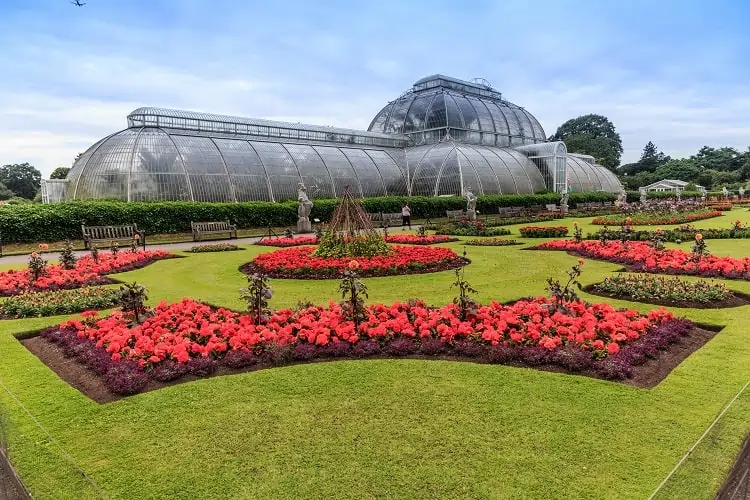
We often find ourselves starting a trip to Europe by flying into Heathrow and spending a few days in London before heading on. On one of these layovers, we were desperate to “reset” our internal clocks and stay awake during the daytime. So we hopped on a train and headed over to Kew Gardens to get some sunshine.
The Royal Botanic Garden, Kew (aka Kew Gardens), is located about 30 minutes from central London and houses one of the most biodiverse places on the planet. This UNESCO World Heritage site dates back to 1759, covers 132 hectares (330 acres), and houses a collection of over 50,000 plants for your viewing pleasure.
Spread out over the countryside. The Gardens include a vast array of settings, from glass greenhouses to ponds, bridges, and pagodas.
The Arboretum has thousands of trees and provides a living landscape that changes from season to season. Many of these trees are as old as the Garden itself. Some cannot be found anywhere else in the world. Some of the “Heritage” trees found here are the Japanese pagoda tree, the Black Locust Tree, and the Lucombe Oak.
You can wander through the Rock Garden has been around since 1882. In a valley carved through the landscape, this garden contains plants collected from six different mountain regions. Or head over to the Rhododendron Dell featuring species Sir Joseph Hooker brought back from his travels to the Himalayas in the mid-19th Century (best seen in April and May).
With its long history and incredible variety of flora and fauna, It’s no wonder that the Royal Botanic at Kew is top on the list of world-famous gardens. When you find yourself in London looking for some sunny outdoor time, I highly recommend a trip to Kew.
5. Boboli Gardens – Florence, Italy

While visiting Florence with some friends, we took an afternoon to do some sightseeing on our own. Hubby and I headed across the Arno River via Ponte Vecchio to the Pitti Palace and Giardino di Boboli.
Pitti Palace, part of the Uffizi Galleries, is a Renaissance royal palace that now houses a dazzling array of Italian and European art. And as you know, most royal courts have massive gardens for the lords and ladies to hang out in.
In the mid-1500s, the Medici family began work on these world-famous gardens, creating a style that would become the model for many European courts to follow. Over the next two centuries, famous architects and artists continued to refine and enhance the landscape’s beauty.
Since there was no natural source of water on the palace grounds, the planners brought a conduit from the Arno River to provide an elaborate irrigation system and bring water to the many fountains of Bobobli. As you meander through the gardens, you will find the Grotto of Adam and Eve; the Lemon House (home to some 500 citrus plants); the grand Boboli Amphitheatre; and the Royal Stables.
Check out this 360 – 3D tour of the Bountalenti Grotto, and feel like you are almost in the cave!
Not wanting the gracious artwork that adorned the palace to stop indoors, several sculptures were commissioned. Today there are hundreds of pieces of art and fountains aplenty to wow Boboli’s visitors.
6. Monet’s Gardens – Giverny, France
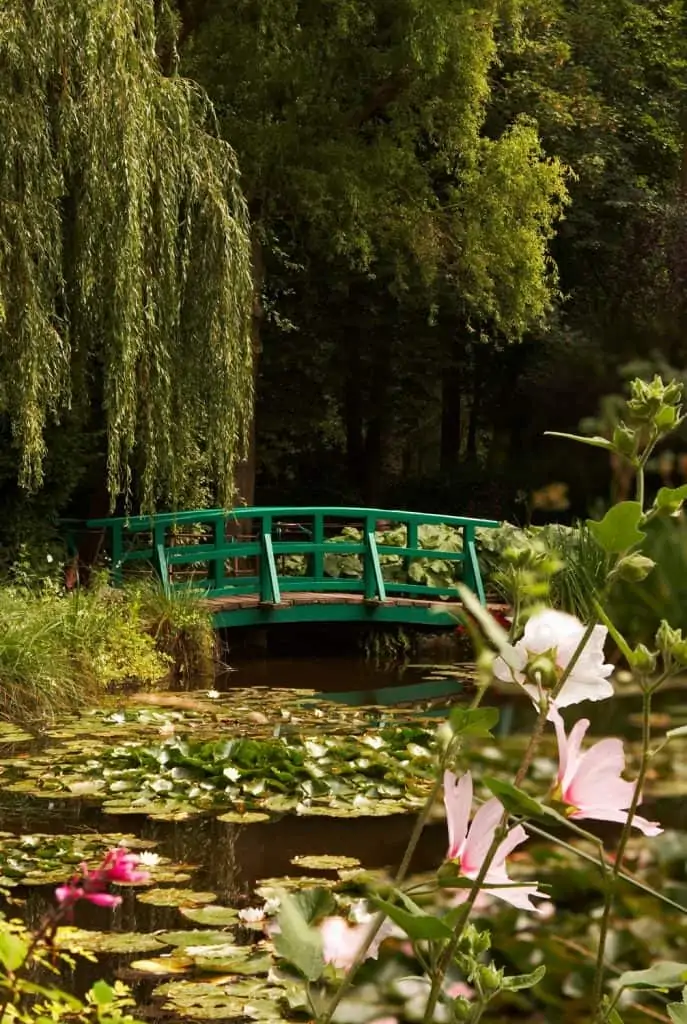
On our first trip to Europe, my husband (to be at the time) and I chose to visit England and France for two weeks. Of course, there were certain must-see items for both of us.
The list was probably longer than it should have been. The British Museum and Stratford Upon Avon in England. Omaha Beach and the Palace of Versailles in France. The list went on and on.
Monet’s Home and Garden in Giverny topped my list. Fascinated by the magnificent paintings of Mr. Monet, I wanted to see if the water lilies he painted really existed. And indeed they do!
While nearly everyone comes to Giverny to see the lilies, there is an equally impressive garden in front of the tiny home with Fruit Trees, climbing roses, hollyhocks, and more. “All of my money goes into my gardens,” said Monet. The water lilies are in the Japanese-inspired water garden across the road from the main house. Monet replicated the gardens he had come to know from prints he collected, never actually visiting Japan.
If you are in Normandy, Giverny is a worthwhile stop on your travels. An afternoon spent in Monet’s gardens is equal to weeks of meditation!
7. Summer Palace – Beijing, China
Beijing is the capital city of China and hosts seven (7) World Heritage Sites. And on my first trip to China in 2007, we hit all seven; it was a lot of walking!
The Forbidden City was home to Chinese Emperors for five centuries from the start of the Ming Dynasty through the end of the Qing Dynasty. When the Emperor and his court wanted to get away from the stress of running the country, they headed over to the Summer Palace.
Said to be the best-preserved imperial garden in the world, a vast ensemble of lakes and gardens surround the many pavilions, halls, bridges, and temples to form the Summer Palace. UNESCO added these unique world-famous gardens and palaces to its World Heritage Site list in 1998.
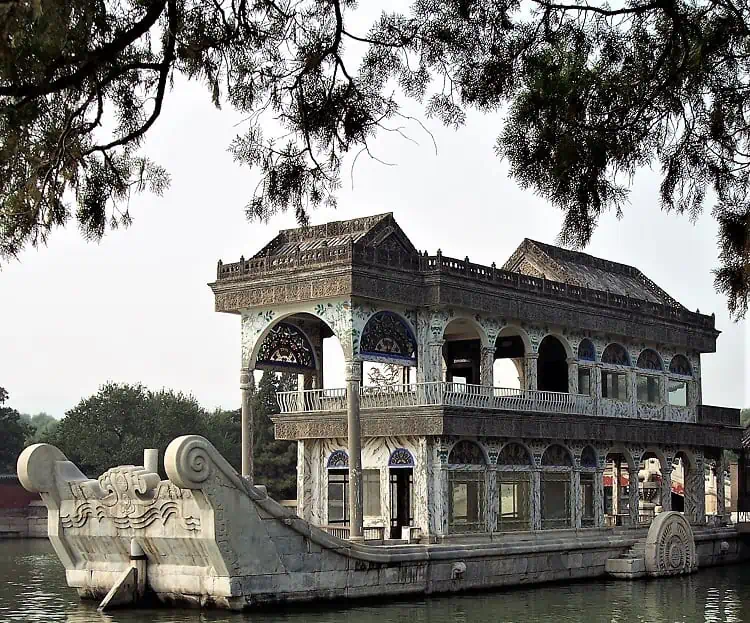
At the center of the Summer Palace is Longevity Hill. From its top, you have an excellent view of Kunming Lake and the surrounding gardens. There are hundreds of scenic spots throughout these enchanting gardens, more than 20 courtyards and 3,000 ancient structures, and 1,600 trees over a hundred years old.
The many fantastic locations for photoshoots, the Tower of Buddhist Incense, the Long Gallery, and the Seventeen Arch Bridge, often find their way to Instagram. My favorite is the Marble Boat.
I found it curious that they would build a boat out of Marble, and actually, it’s not. The superstructure is made of wood painted white to look like a marble boat. Hence the name Marble Boat.
A vast mirror was set on each tier, reflecting the waves in the lake. Sitting in front of the mirror, one may feel as though he is floating on the water. It’s said that this location was the place the Empress Dowager Cixi liked to rest and enjoy the lake scenery.
8. Gardens By The Bay – Singapore

After a day-long food tour through the many Singapore neighborhoods, we needed a way to exercise off a few of the many calories we had consumed. A long walk through beautiful gardens was just the ticket.
Almost everyone recognizes the Flower Dome and Cloud Forest’s iconic greenhouses and the SuperTree Grove of the world-famous Gardens by the Bay in Singapore. The stunning modern architecture of these structures at the edge of the Bay draws you in. The lovingly cared-for gardens, art, and attractions keep you going.
This is the youngest Garden on our list. Conceived, planned, and opened as a public space all in the 21st Century! Gardens By the Bay has only been welcoming visitors since 2010/2011.
In addition to the Flower Dome and Cloud Forest, a Children’s Garden includes a water park. If you have little’s with you, this is an excellent place for them to burn off some energy. There are three outdoor gardens: Bay East Garden, the Sun Pavillion, and the Heritage Gardens, each showcasing a unique view of Singapore.
Have you walked enough yet? You still have the Canyon filled with rock sculptures, the World of Plants and Serene Gardens with their beautiful topiary and formal garden paths, and lastly, Dragonfly & Kingfisher Lakes.
Do plan to spend the better part of the day at the Gardens. But remember, the SuperTrees really come to life after dark. You don’t want to miss this fantastic light display!
9. Ryoan-Ji Garden – Kyoto, Japan
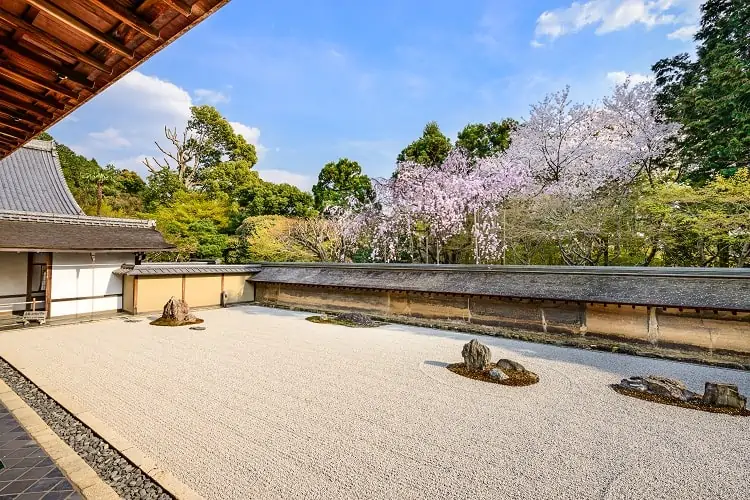
Kyoto is a sparkling jewel in the crown of Japan. There are fantastic sites everywhere you look. The Fushimi Inara Shrine offers the ultimate Torrii gate experience. Remember the scene in Memoirs of a Geisha when Chyo (“Sayuri”) runs through the torii gates? This is where that happened.
Kinkakuji with its Golden Temple reflected in the lake. Kyoto’s Imperial Palace, where the Imperial family resided until 1868. All of these beautiful properties are surrounded by enchanting gardens. But the Ryoan-Ji Temple is unique with its famous Zen Rock Garden.
The garden’s construction date is unknown. But most likely dates to when the site was converted into a Zen Temple around 1450. The garden is a rather small rectangular plot of pebbles surrounded by low earthen walls. In the field, 15 rocks are laid out in small groups on patches of moss. It’s interesting to note one feature of the garden’s design… from all vantage points, at least one of the rocks is always hidden from the viewer.
Some believe that the garden represents a tiger carrying her cubs across a pond or islands in the sea. In contrast, others claim that the garden represents an abstract concept like infinity.
But following Zen philosophy, it is up to each viewer to find the garden’s meaning for him/herself. Ryoan-Ji is a place of quiet reflection and contemplation. Thus visiting in the early morning, when crowds are usually smaller, is recommended.
So Many World-Famous Gardens … So Little Time
There you have it … 9 World-Famous Gardens from Cities in North America, Europe, and Asia. There are so many more, but I would like to hear from you. Where are your favorite gardens, and what about them touches your soul? Leave me a comment below to let me know. 😊
